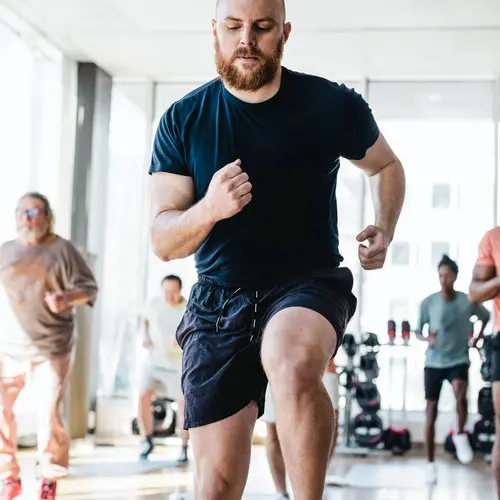Taping your knee can help stabilize it when you’re active and can give relief from pain. You can choose from many kinds of tapes and taping methods to tape your knees for support. Talk with your doctor or physical therapist about the best option for you.
Types of Knee Tape
The two main kinds of tape have been effective in different studies.
Rigid tape. This type doesn't stretch. It's designed to help keep an area from moving.
Elastic tape. This type, also called kinesio tape, is designed to be the same weight and thickness as your skin. It's made of stretchy cotton with adhesive on one side. This is the brightly colored tape you've probably seen on athletes during races and games. Kinesio tape offers stability but with a wider range of motion than rigid tape. Keeping a joint from moving can sometimes make it stiffer.
Methods for Taping Your Knee
The McConnell technique. This method uses rigid tape to align the kneecap (or patella) to ease pain. You can use it for knee osteoarthritis, patellofemoral pain syndrome (otherwise known as runner’s knee), and chondromalacia patella (when the cartilage behind your kneecap is damaged).
You'll need a roll of 2-inch-wide adhesive gauze to protect your skin and a roll of 1 1/2-inch-wide rigid athletic tape.
- Sit with your leg slightly bent and stretched out in front of you.
- Cut 2 pieces of adhesive gauze and put them across your kneecap to protect your skin.
- Start the strip of rigid tape in the middle of the kneecap and pull it over the kneecap toward the inner part of your knee.
- Push the soft tissue on your inner knee toward the kneecap.
- Secure the tape to the inner side of the kneecap.
Kinesio taping technique. This method used the more flexible elastic tape to support your knee while allowing a good range of motion. You'll need two pre-cut Y strips and two pre-cut I strips. Rub the tape to activate the adhesive after you put on each strip.
- Sit in a chair with your knee bent.
- Put on the bottom part of the Y-shaped piece of tape starting at mid-thigh.
- Slightly stretch one tail of the Y-shaped tape and around one side of the kneecap, coming back to the center below the kneecap.
- Repeat with the other tail on the other side of your kneecap. The kneecap should be surrounded.
- Take the other piece of Y-shaped tape and put on the bottom part, starting several inches below the kneecap.
- Slightly stretch one tail of the Y-shaped tape and apply it around the kneecap, ending on the outside of the other strip.
- Repeat with the other tail on the other side of your kneecap.
- Place the middle of the first I strip below the kneecap.
- Straighten your knee slightly and continue applying the strip upward on either side of the thigh, outside of the Y strips.
- Repeat with the second I strip placed slightly lower than the first.
These are only two methods of many. Your doctor or physical therapist can help you find the best method to help with your issues.
Other Methods to Manage Knee Pain
Taping should be only one part of an overall plan to manage your knee pain. Depending on the cause, your treatment plan may also include:
Weight loss. Being overweight puts a lot of stress on your joints. For every 1 pound of extra weight you carry, 2 to 4 pounds of extra pressure is placed on your knees. If you're overweight, losing weight is the most important thing you can do for your knees.
Physical therapy. Exercise can help strengthen your knee and improve your range of motion. If you have arthritis, physical therapy may focus on strengthening your hips. When your hips are weak, your knees have to do more work. A physical therapist can also help you figure out whether you need braces or assistive devices.
Medicines. Nonsteroidal anti-inflammatory drugs (NSAIDs) can help with flare-ups but can cause problems when you take them long-term. Topical NSAIDs in the form of creams or gels may be a good option.
Injection therapy. Corticosteroid shots to your knee can offer pain relief for some people. Hyaluronic acid injections may provide longer-lasting relief. Platelet-rich plasma and stem cell injections are two other options, but they aren't covered by insurance.


